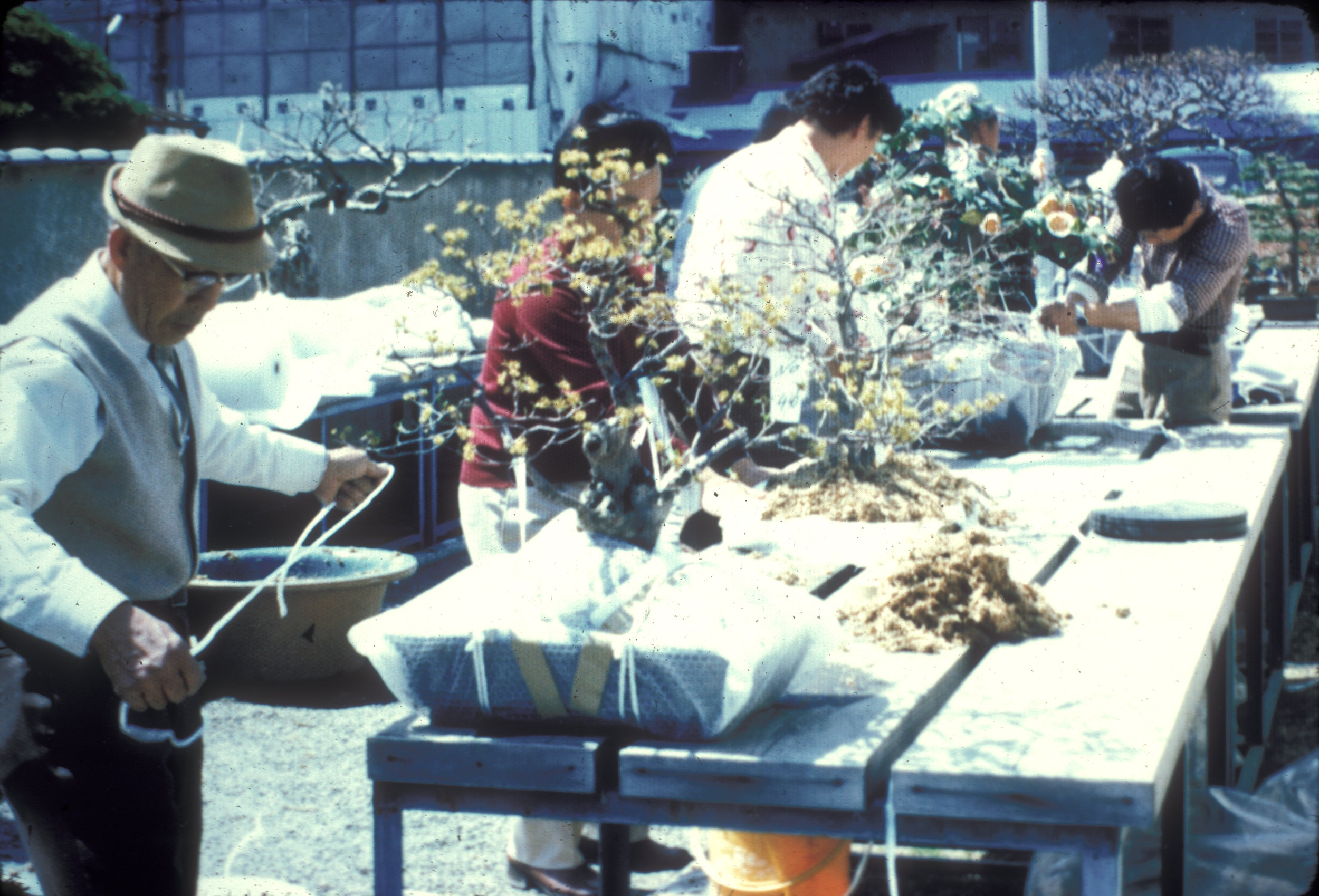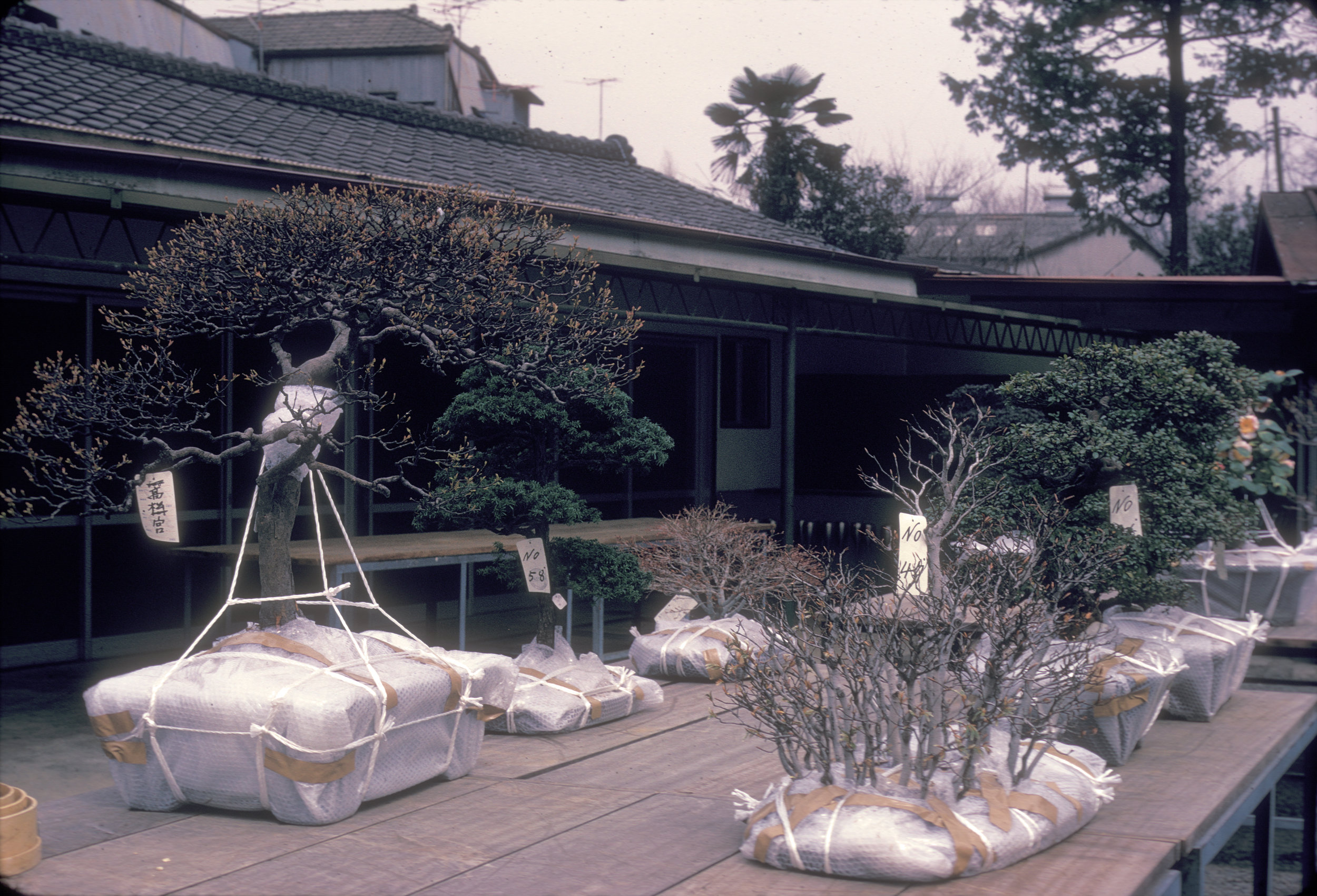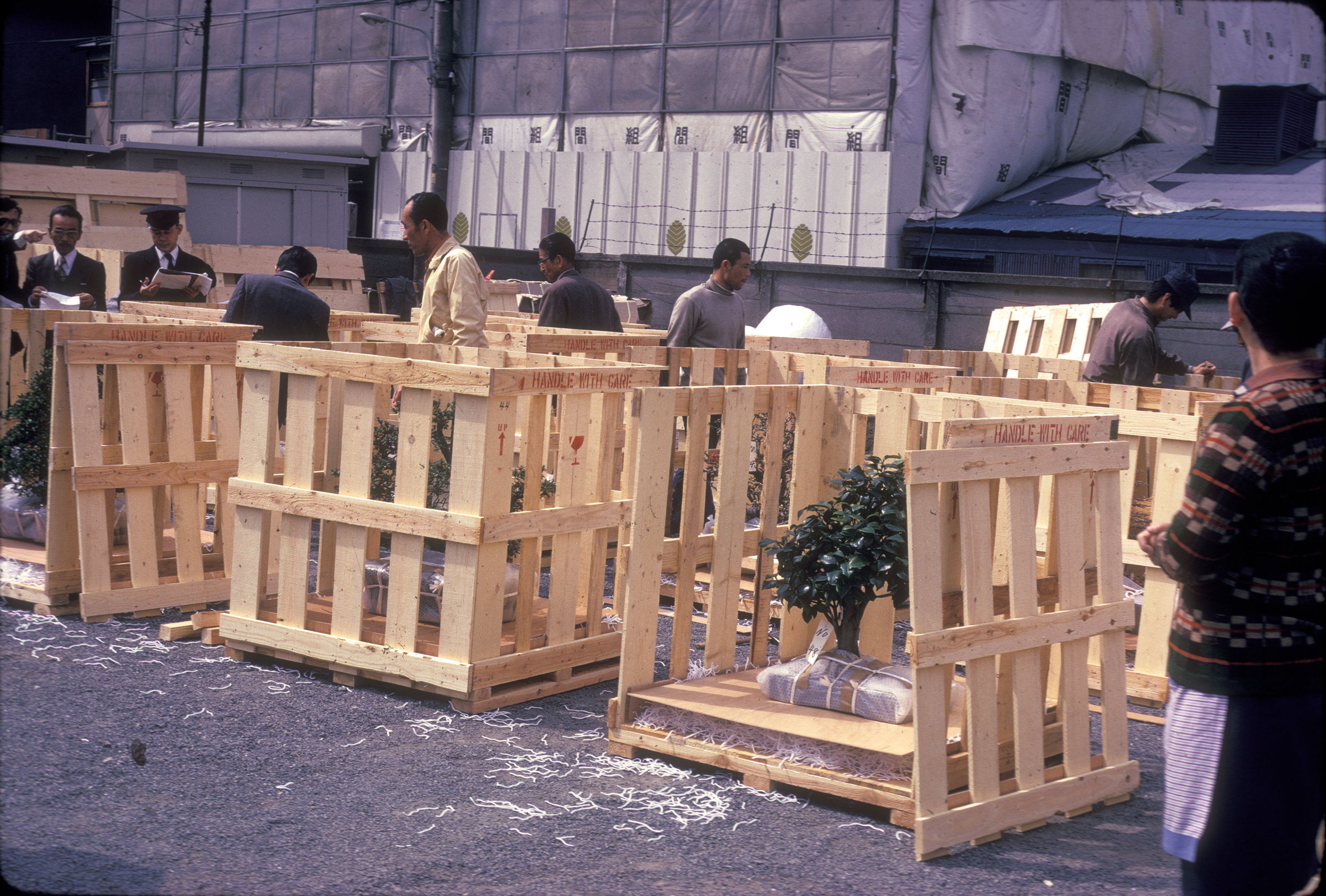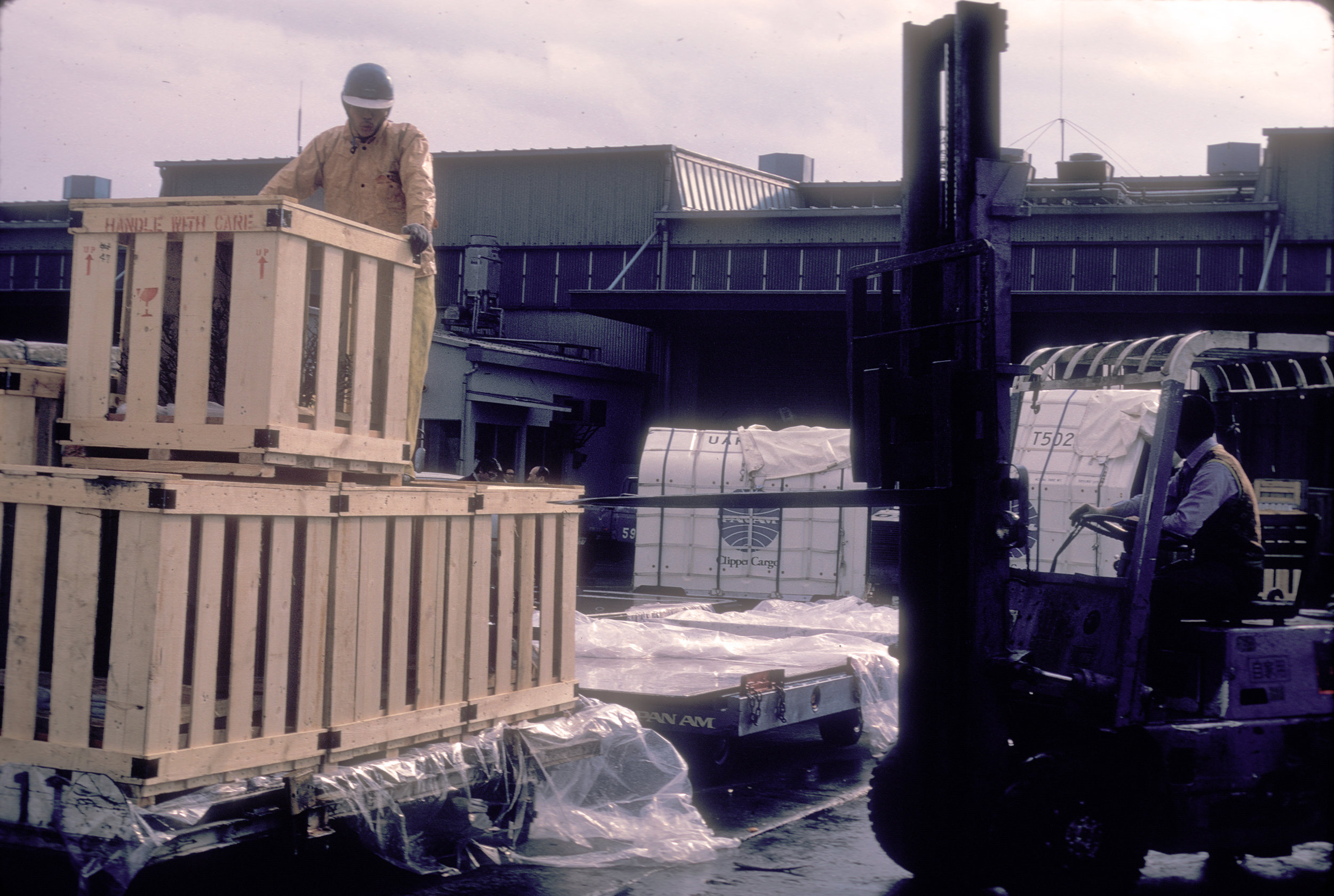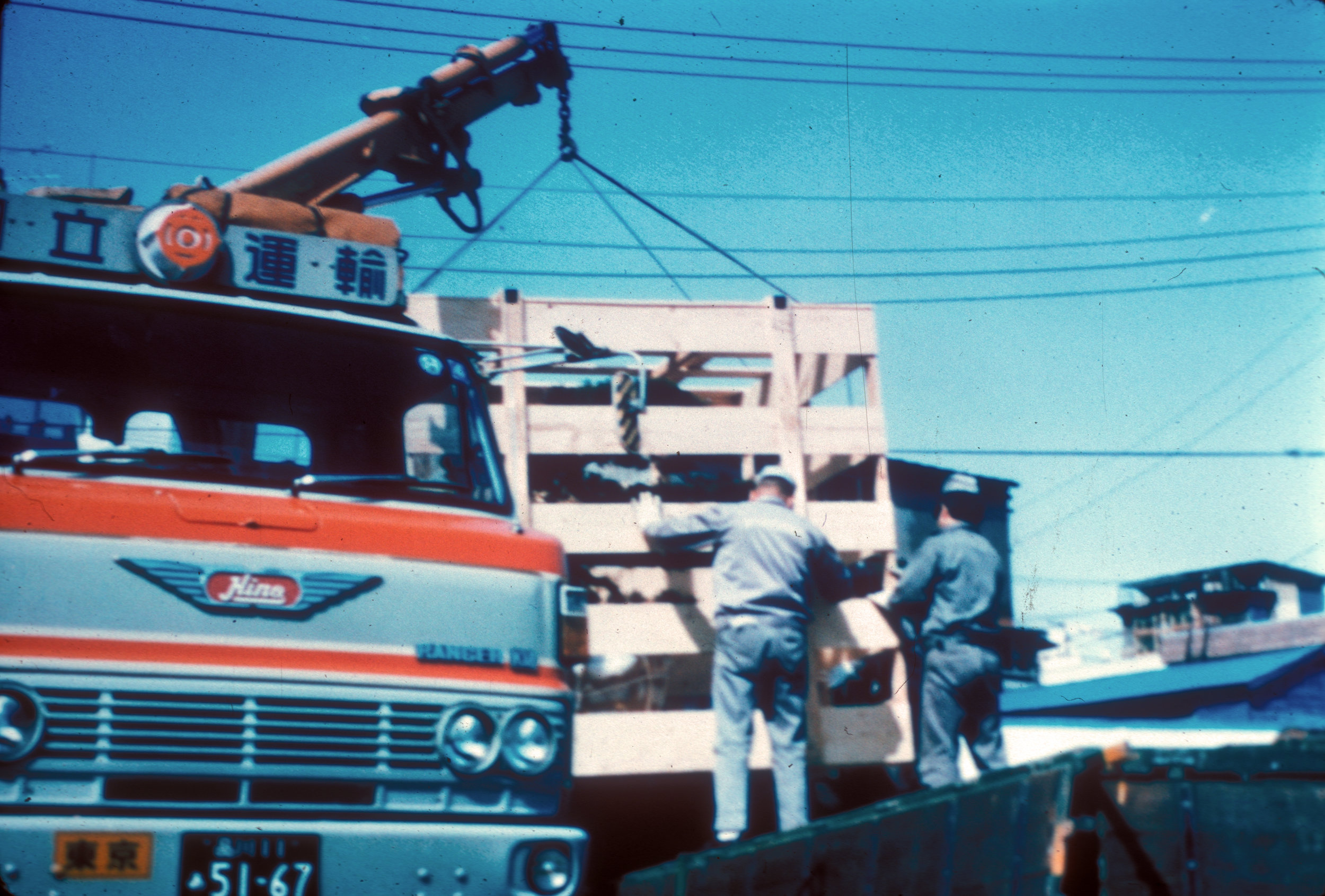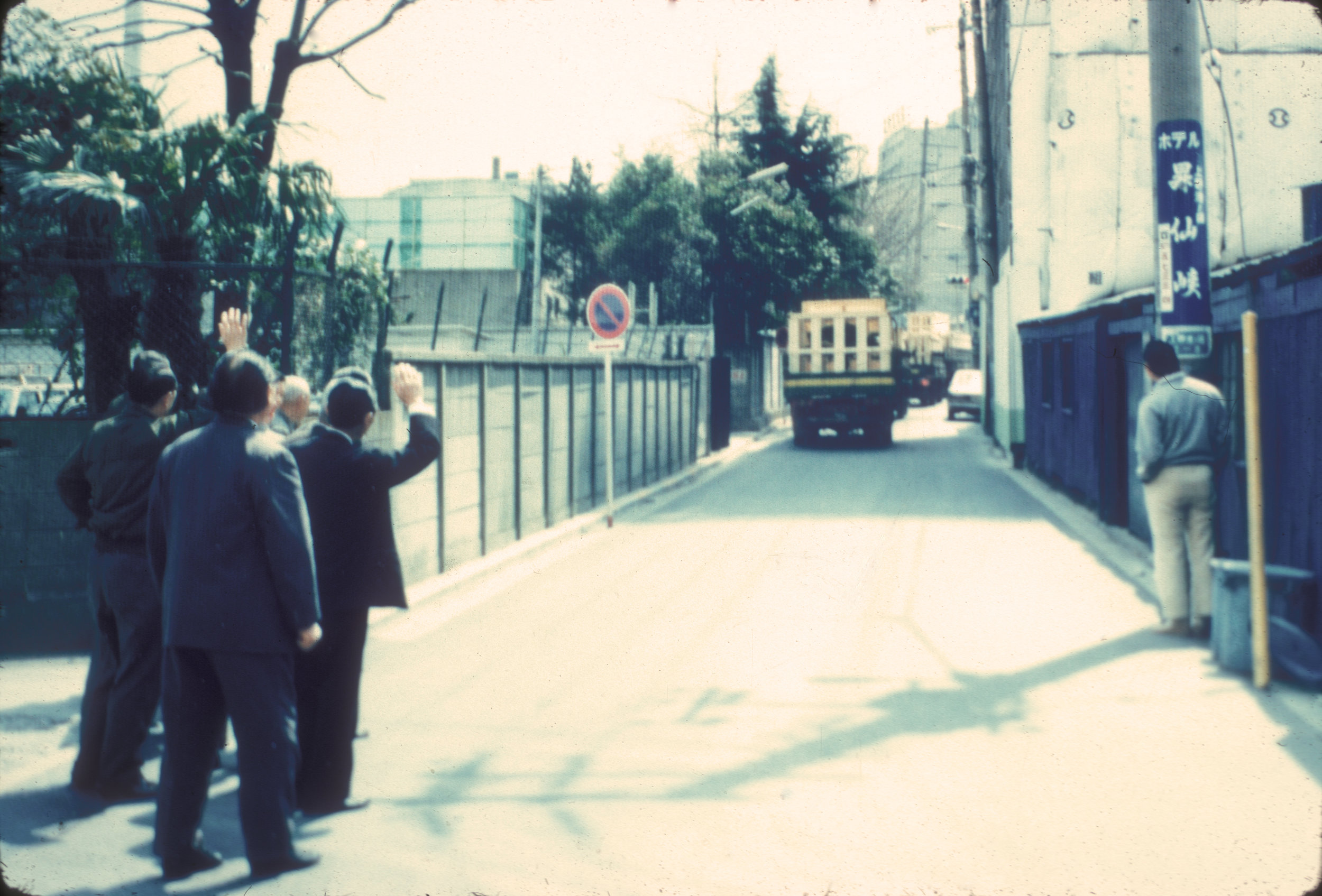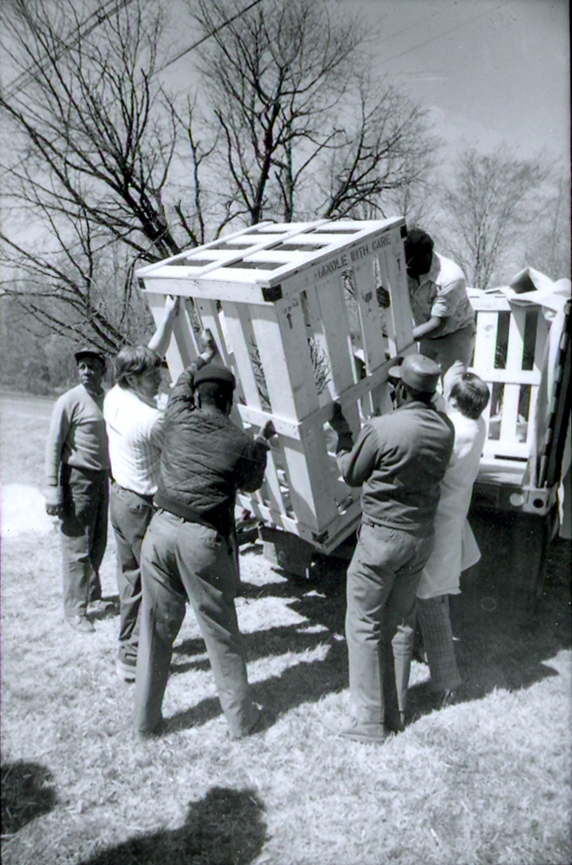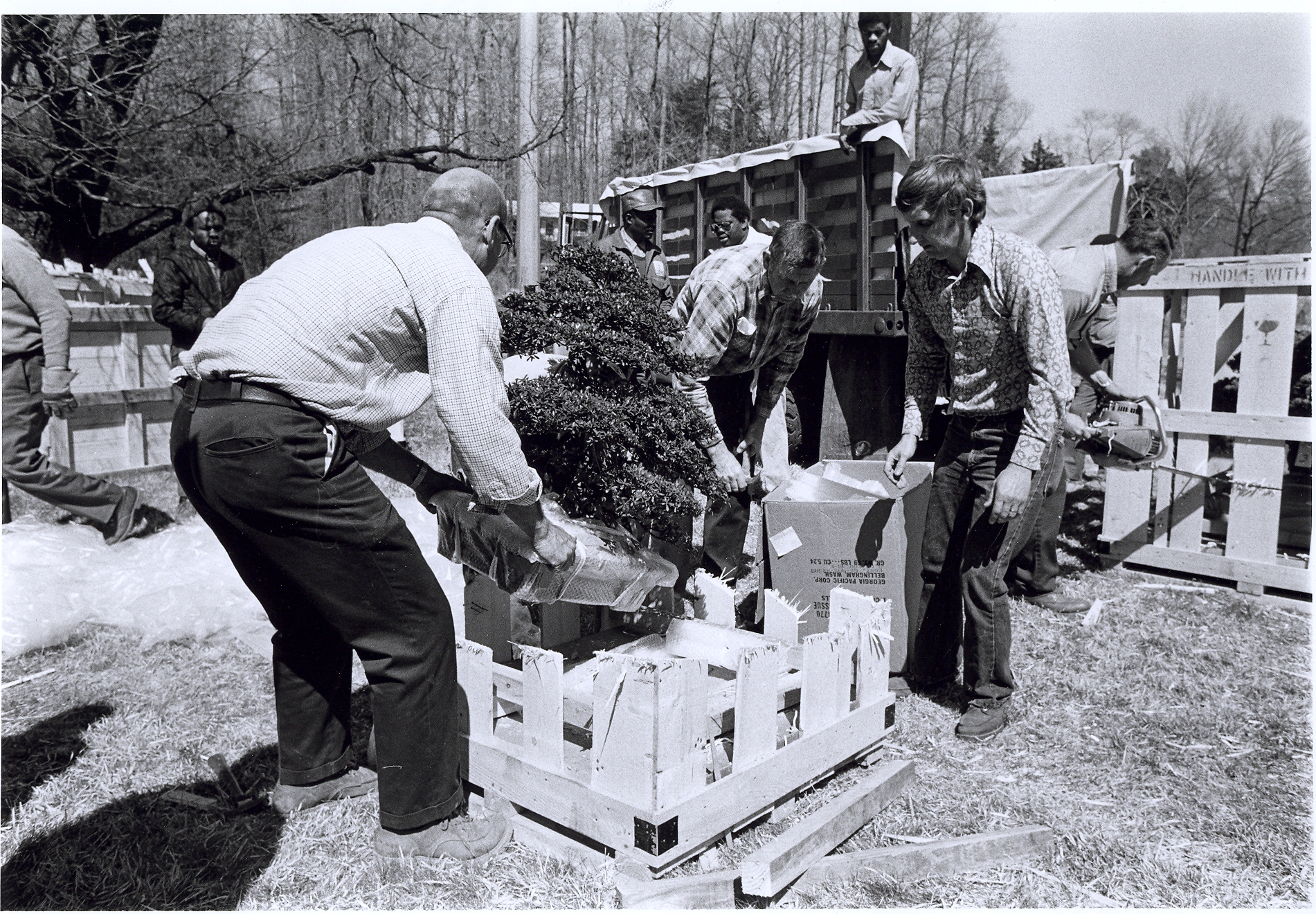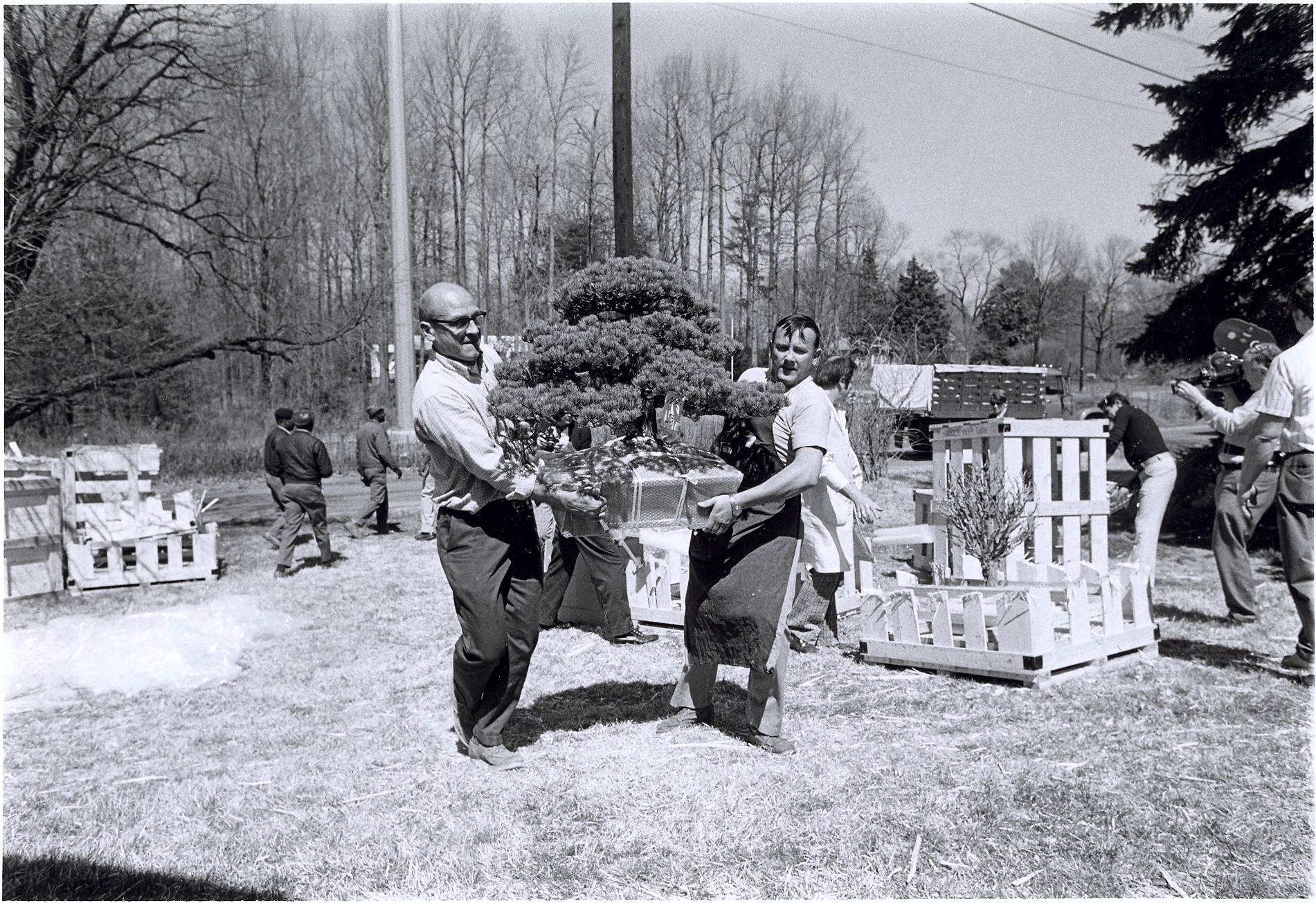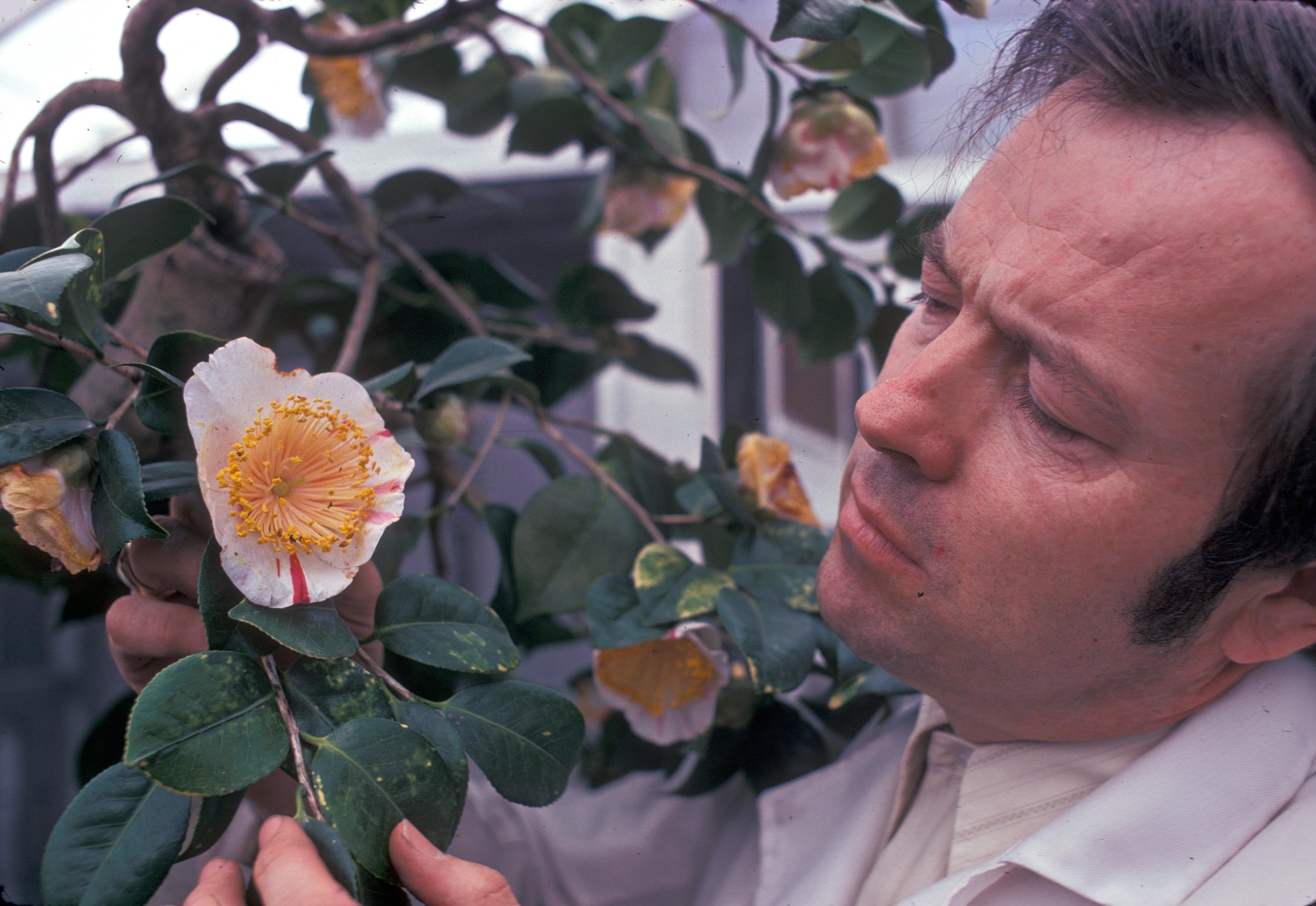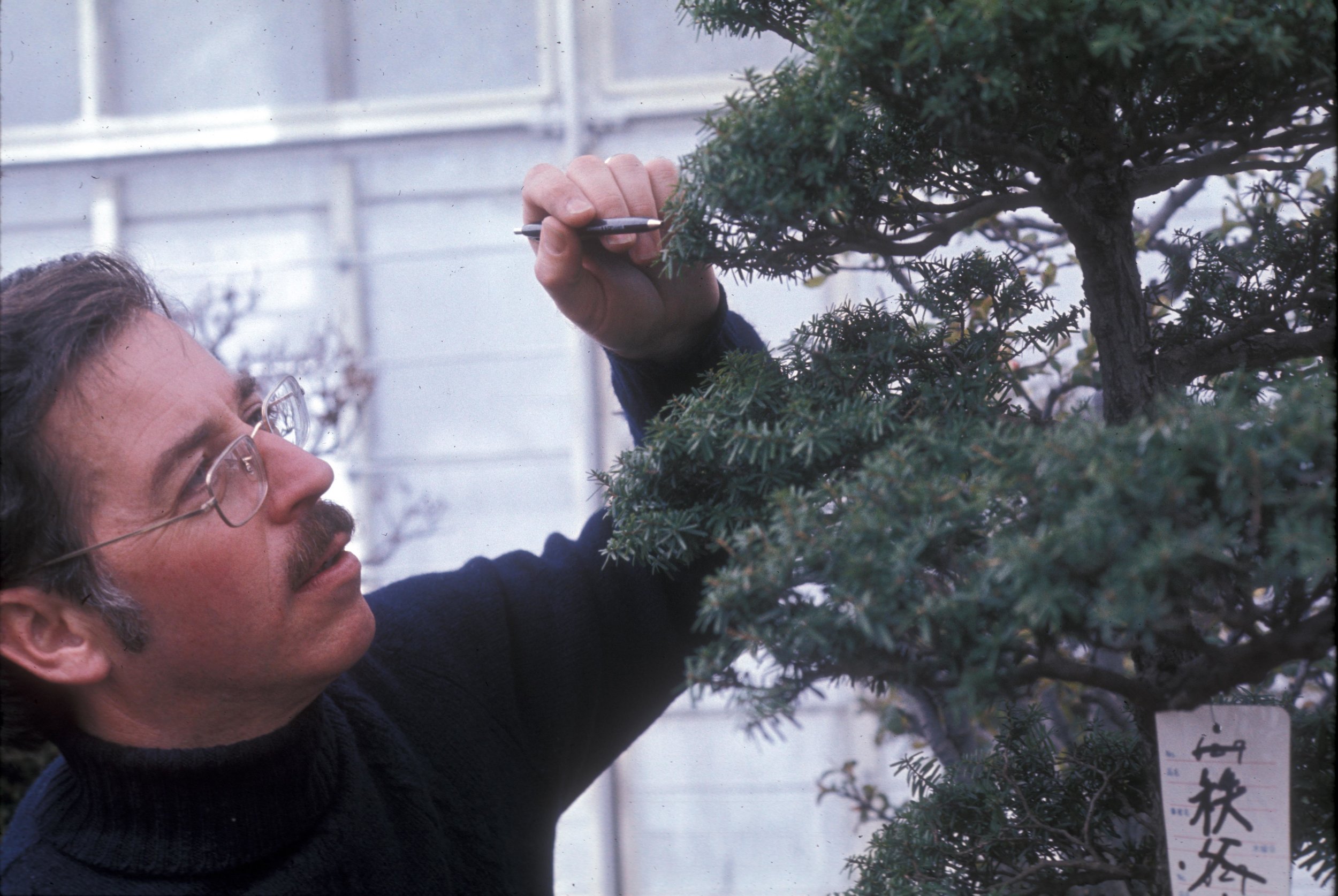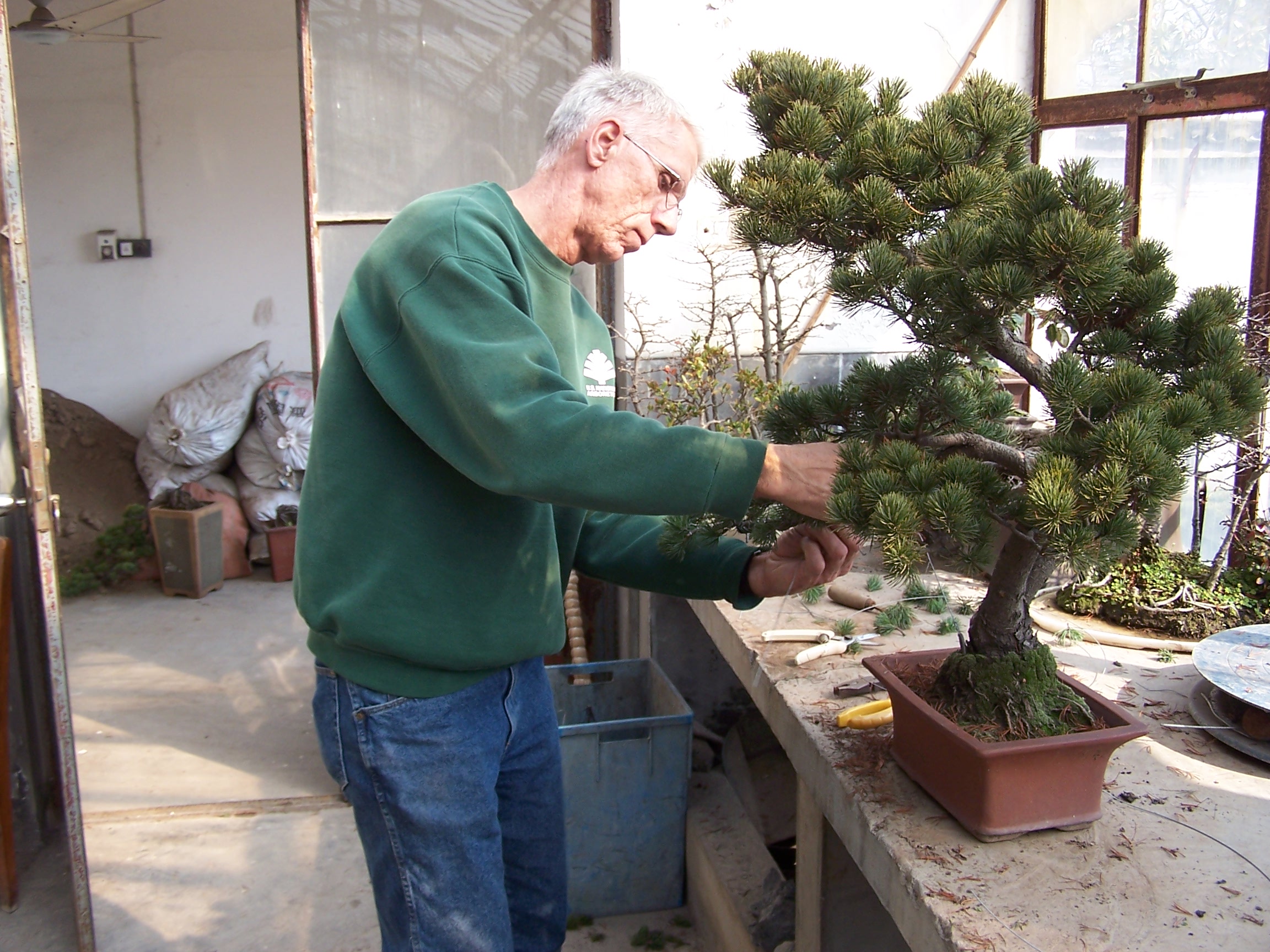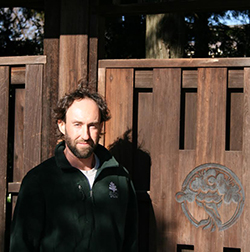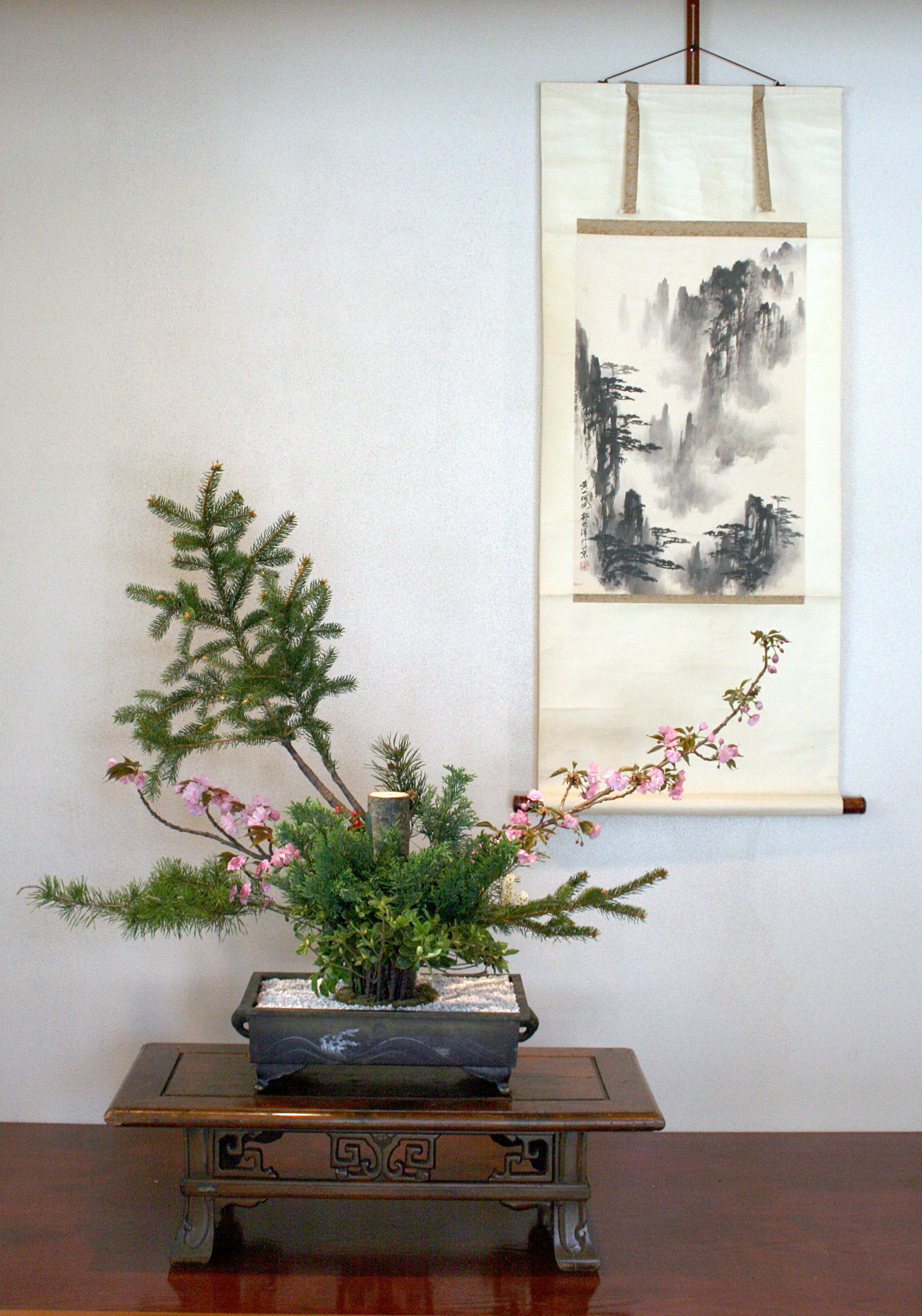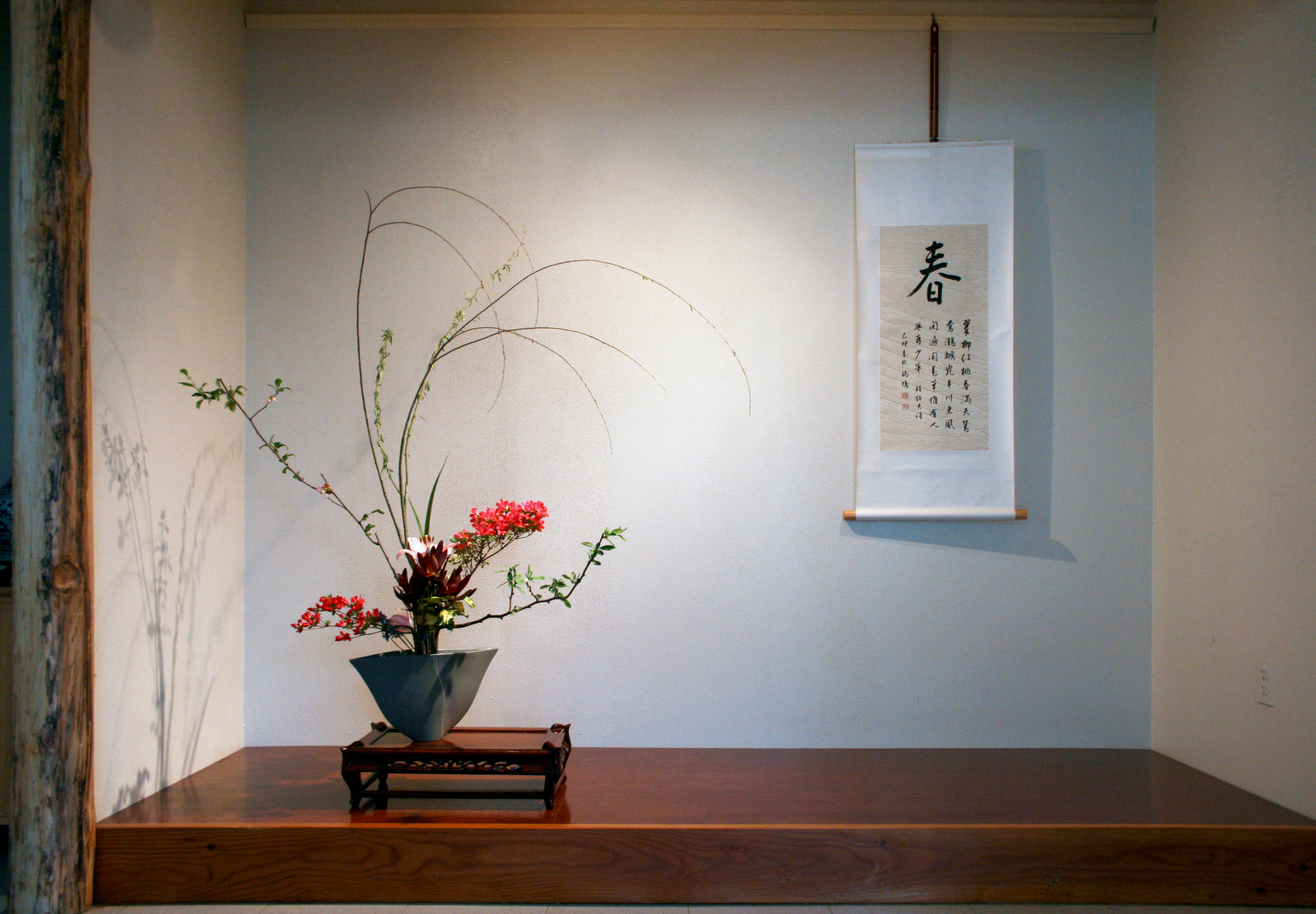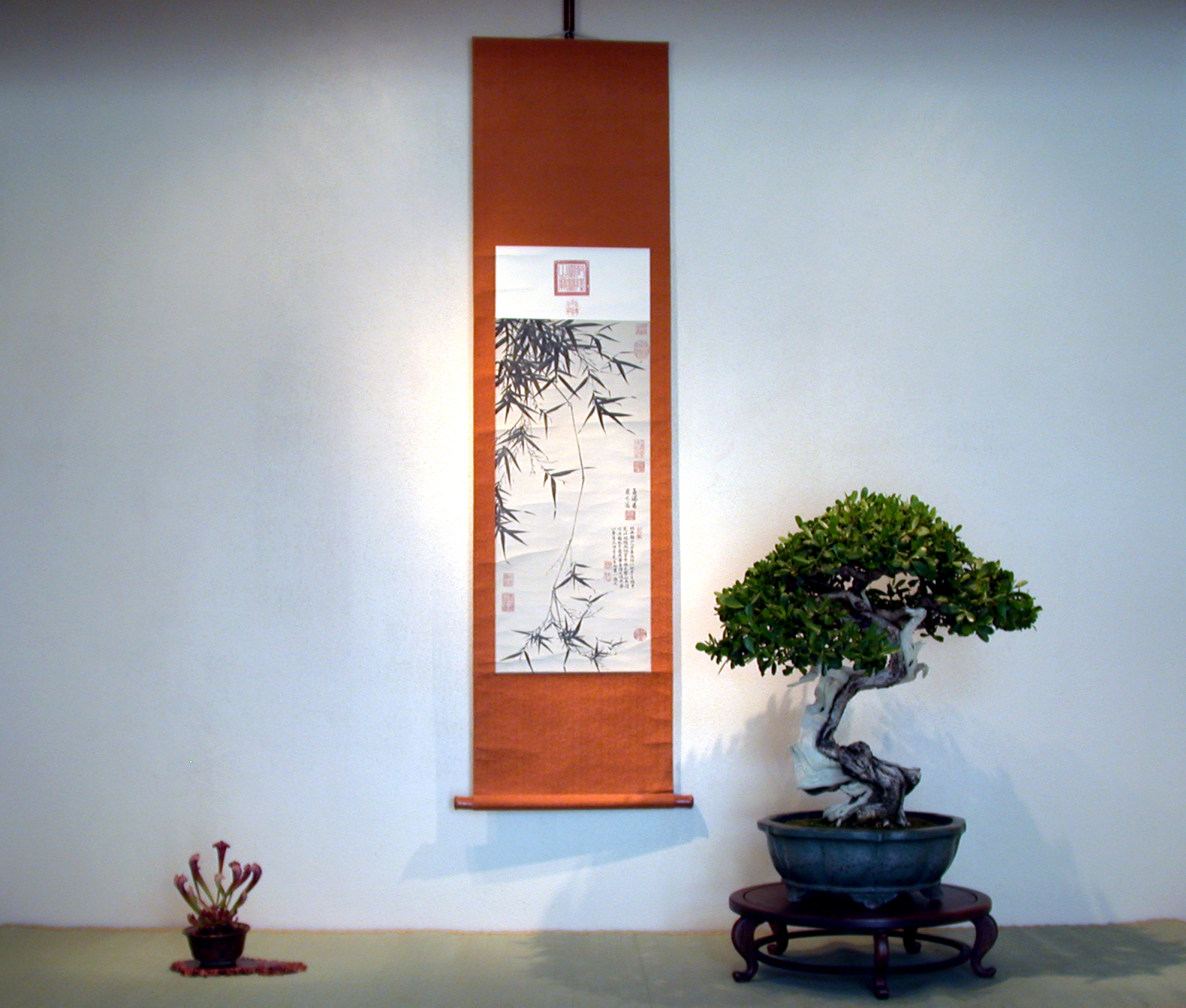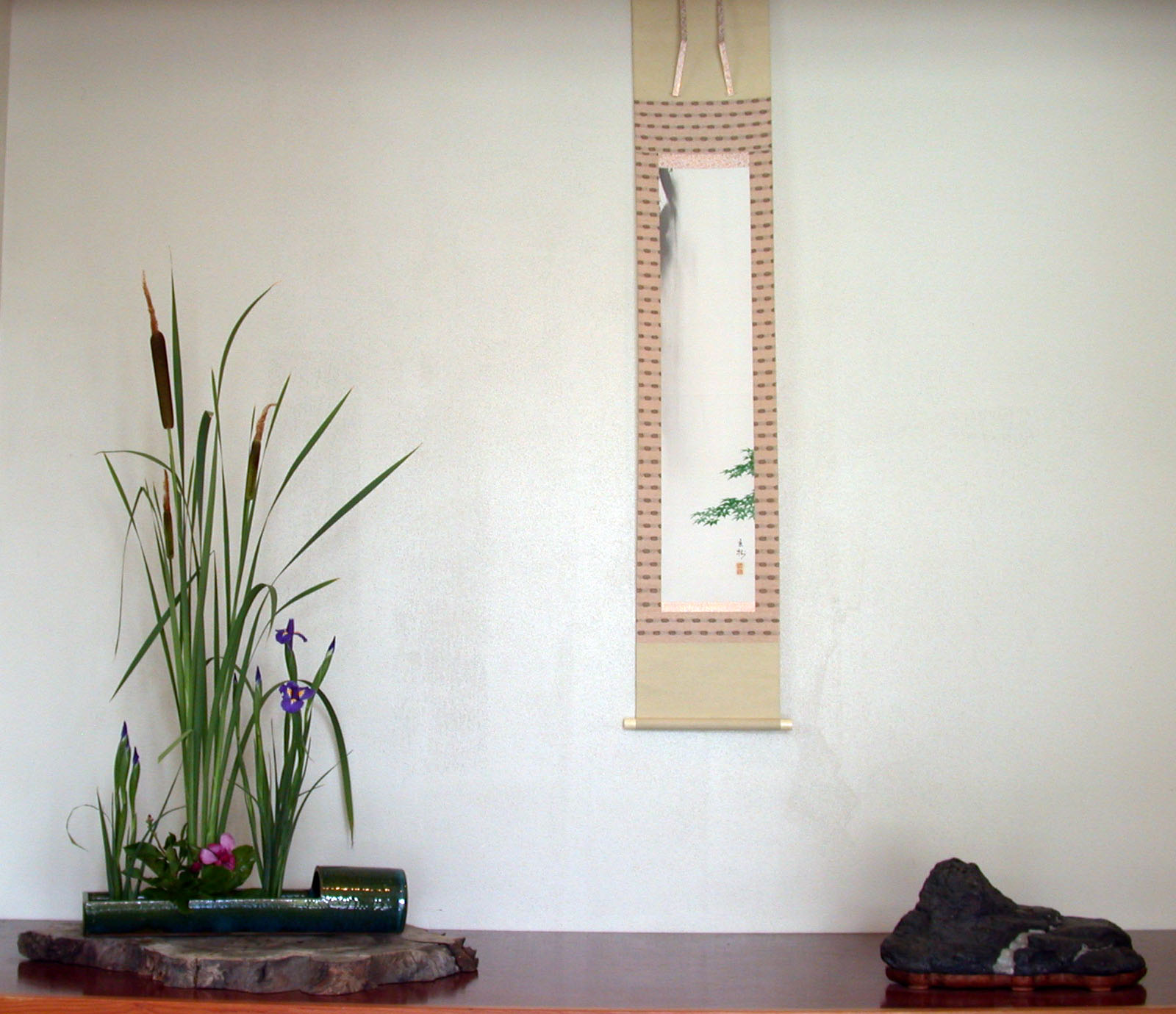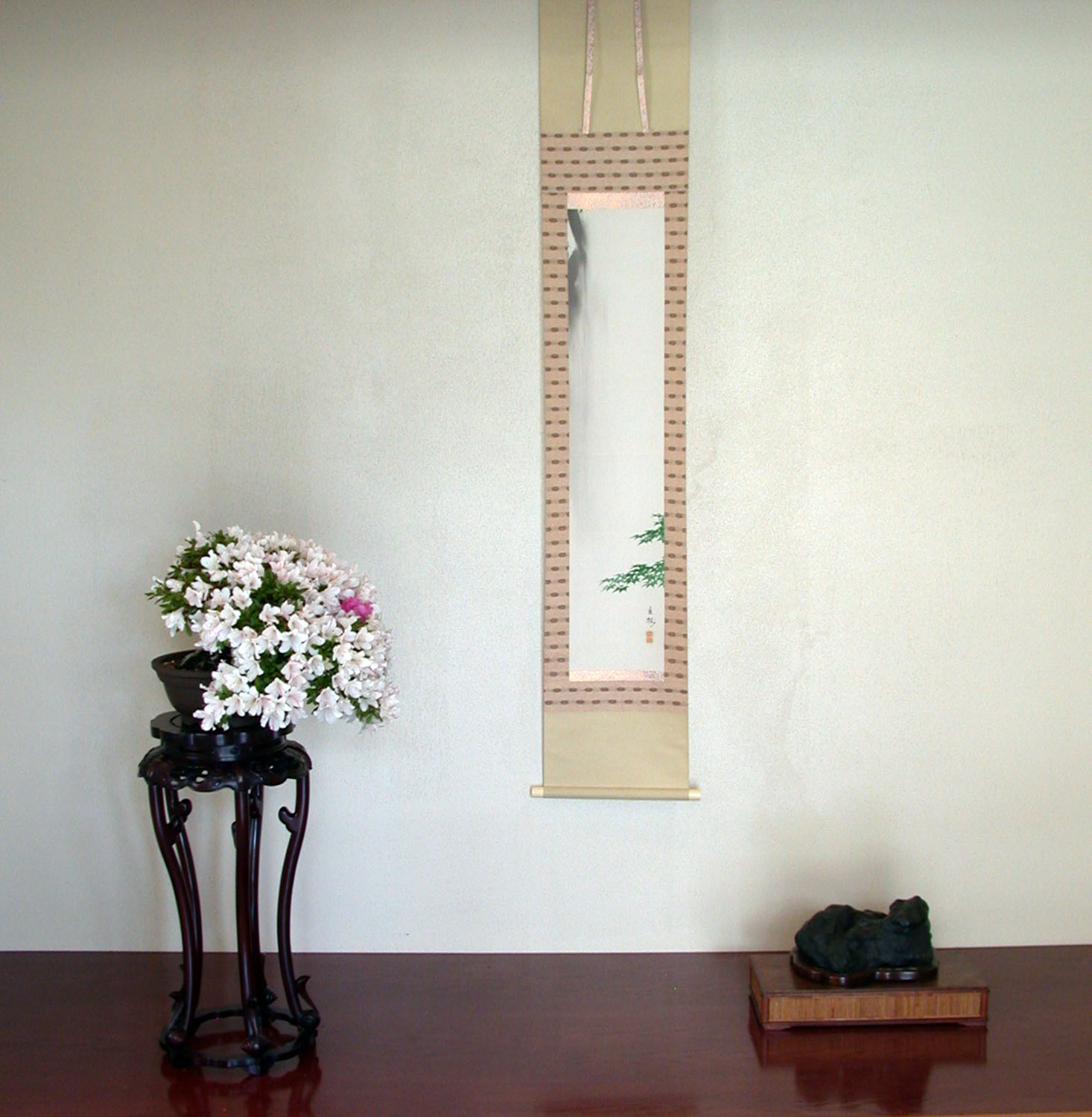Welcome to the world's first and finest museum devoted to Bonsai.
“Walking through the Museum, surrounded by trees that are often hundreds of years old, always gives me a sense of being closer to nature, with its timeless calming and tranquil effect.”
The National Bonsai & Penjing Museum is located on the grounds of the U.S. National Arboretum in Northeast Washington, DC. It is the first and best of its kind in the world. Supported in large part by the National Bonsai Foundation, this museum is an international scholarly center where superior bonsai and related arts are displayed and studied for the education and delight of visitors.
Recently voted “Best Place to Take an Out-of-Towner*,” and “Best Museum Off the Mall+,” by Washington City Paper readers, it is free and open to the public and wheelchair accessible.
Camellia japonica Higo
*1st Place / + 3rd Place
LEARN MORE:
MUSEUM GOALS
National Bonsai & Penjing Museum Goals:
Assemble and nurture a superior bonsai collection with special emphasis on specimens from Japan, China and North America.
Provide education about bonsai and support the scholarly study of this art.
Acquire and maintain a collection of viewing stones.
Acquire and maintain a collection of stands, scrolls and containers which enhance the exhibit of bonsai.
Develop and maintain a library and archive of literature and other materials related for bonsai and related arts.
Maintain the museum setting to complement the display of bonsai.
If you’d like to help us accomplish these goals, we’d love to hear from you. You can contact us here or become a member of the National Bonsai Foundation. Learn more here.
CONSTRUCTION OF THE MUSEUM
→ To learn even more about the Pavilions, Courtyards, and Gardens in the Museum, click here.
Constructed around the beautiful Maria Vanzant Upper Courtyard, the Rose Family Garden and the Melba Tucker Arbor, the Museum is made up of three pavilions and two activity centers.
A visitor can best experience the Museum by entering along the Cryptomeiria walk to the Mary E. Mrose International Pavilion. This pavilion gives the visitor information and is a display area for educational exhibits and collection shows. To follow the path of historical development of the art of penjing and bonsai, the next stop is the Yee-sun Wu Chinese Pavilion that houses the penjing collection. Moving across the courtyard to the Kato Family Stroll Garden the visitor is introduced to the oldest of the structures, the Japanese Pavilion. (The Japanese Pavilion was renovated and re-opened in 2017. Learn more about that initiative here.) From there, walking through the George Yamaguchi Garden, the visitor reaches the John Y. Naka North American Pavilion and the Kanehshiro Tropical Conservatory. Finally, the Yuji Yoshimura Center provides demonstration space and workroom and office facilities for staff and volunteers.
All of these spaces are dedicated to people who have played great roles in the creation of this Museum. Each one has loved bonsai and penjing and wanted to share this love of trees with others. Their gifts to the National Bonsai Foundation and the Arboretum have provided the setting where visitors can encounter these exquisite trees that evoke a different time and place.
MUSEUM HISTORY
Not surprisingly, the story of the National Bonsai & Penjing Museum (located on the grounds of the U.S. National Arboretum) begins with plants.
Japanese prepare for shipment of bonsai gift (1976).
Plants are the heart of an arboretum. The American Bicentennial Celebration of Independence in 1976 ignited an international shower of gifts on the citizens of the United States. During this celebration, the people of Japan gave something unique to their culture and a living tribute to peace between the two countries. The Nippon Bonsai Association of Japan formally presented fifty-three bonsai trees to the U. S. National Arboretum in July of 1976. This was the auspicious beginning of the National Bonsai & Penjing Museum.
But the story of small trees in pots at the U. S. National Arboretum actually began in 1972 with a gift of penjing trees from China to President Richard M. Nixon. So there was good reason to acquire more Chinese penjing, the antecedent art form of bonsai, for the Museum. Therefore in the 1980s, when a large collection of penjing from Dr. Yee sun-Wu of Hong Kong was offered to the Museum, it was gratefully accepted. Now, possessing both Chinese and Japanese collections, the Museum could give visitors a sense of the two main threads in the ancient historical continuum of artistic potted trees.
While bonsai and penjing frame the Museum’s name and are the foundation of its growth, it is the collection of North American plants from regional artists that brings an indigenous focus to the enterprise. Each tree is a gift from a collector within North America and each work of art shows how these practitioners are bringing a new dimension to an old form.
As the good reputation of the Museum has spread, other donors (for example Daizo Iwasaki of Japan and the late Stanley Chinn of Maryland) offered new specimens to the different collections. This has enriched the collections and brought new visitors to wonder at these small trees.
With three separate collections representing three different cultures and geographical locations, the National Bonsai & Penjing Museum, located in the capital of the United States is a gift to be shared with all people.
Musueum Milestones
1927
The 69th Congress passes Public Law 799, authorizing the Secretary of Agriculture to establish a National Arboretum in Washington D.C.
1959
The U.S. National Arboretum is open to the public on a daily schedule.
1974
President Richard Nixon accepts several penjing trees as a gift from the People's Republic of China following his historic visit to that country. He gives these trees to the National Arboretum and they are placed under the care of Robert Drechsler who becomes the first curator of bonsai. One of these trees remains in the Chinese penjing collection today. Note: This was not the beginning of the official Museum.
1975
The Japanese people present 53 bonsai and 7 viewing stones to the citizens of the United States in celebration of the upcoming American Bicentennial. This Green Mission for Peace heralds the beginning of the National Bonsai & Penjing Museum at the U.S. National Arboretum, the first museum in the world dedicated to the public display of the art of bonsai.
1976
On July 9th the Japanese Stroll Garden and the Japanese Bonsai Pavilion. designed by Masao Kinoshita of Sasaki Associates, along with the gift of bonsai trees and stones, is dedicated in an historic event attended by many dignitaries from Japan and the United States. A Chrysanthemum viewing stone, presented to President Gerald Ford, is given to the Museum's National Viewing Stone collection.
1978
President Jimmy Carter displays a tree from the Museum collection in the Oval Office at the White House which was a gift from Japanese Prime Minister Fukuda on the occasion of the Prime Minister's visit to the United States.
1984
American bonsai master John Y. Naka donates his bonsai 'Goshin' (Keeper of the Spirit) to the Museum's growing North American Collection.
1993
Construction of the Haruo Kaneshiro Tropical Conservatory and the George Yamaguchi Garden is completed with funding provided by NBF. Seventeen tropical species bonsai are selected by NBF for display in the Conservatory.
1996
The Yee-sun Wu Chinese Garden Pavilion for the display of penjing and the Mary E. Mrose International Pavilion for Information, Education and Cultural Exhibits are completed with NBF funds. More than 30 penjing, donated by Dr. Yee-sun Wu and his colleague Mr. Shu-ying Lui, are put on display in the Chinese Pavilion. NBF selects North American viewing stones for the permanent collection.
1997
Death of Yuji Yoshimura and NBF establishes a fund to benefit the Museum in his honor.
1998
Japanese Prime Minister Keizo Obuchi presents to U.S. President William Clinton two bonsai and a suiseki on the occasion of President Clinton's visit to Japan. Robert Drechsler retires as the first Curator of Bonsai. Warren Hill becomes the second Curator. An exhibit of trees and stones inspired by the teaching of Bonsai Master Yuji Yoshimura opens in the Special Exhibits Wing to commemorate his teaching and his life.
1999
Japanese Prime Minister Keizo Obuchi presents to President William Clinton seven bonsai for the Museum's collection.
2001
The National Bonsai & Penjing Museum celebrates its 25th Anniversary with an Asian Arts Festival attended by over a thousand visitors. A sculpture of John Naka by artist Bonnie Kobert is unveiled in the North American Pavilion. NBF sponsors the first North American Bonsai Pot Competition for ceramic artists and the winning pots are displayed in the Special Exhibits Wing. NBF, along with the U.S. National Arboretum and the Potomac Bonsai Association, are selected by the World Bonsai Friendship Federation as the sponsoring hosts for the 5th World Bonsai Convention to be held in Washington D.C. in 2005. Warren Hill retires as Curator.
2002
A Scholarly Symposium on Bonsai and Viewing Stones, funded by Mary E. Mrose, attracts an international group of participants. The Japanese Stroll Garden is rededicated as the Kato Family Stroll Garden. Jack Sustic, formerly Assistant Curator at the Museum, becomes the third Curator. The Second North American Juried Bonsai Pot Competition is held.
2003
The Maria Vanzant Upper Courtyard and the H. William Merritt Entrance Gate to the Kato Family Stroll Garden are dedicated. This is the first phase of a project that will make the interior space in the Museum accessible to all visitors. The designer of the project is Rhodeside and Harwell, Inc., of Alexandria Virginia. An innovative exhibit exploring the relationship between modern ceramic art as pots and traditional bonsai plants, Bonsai inSites: Collaborations between Tree and Container, curated by Ron Lang, is displayed in the Special Exhibits Wing. A continuing exhibit Bonsai: Test your Knowledge! for the orientation of new visitors to the Museum opens in the International Pavilion. An orientation map to the Museum complex is also installed here.
2004
On May 19th NBF Honorary Director John Y. Naka dies and a fund is established in his honor. The Museum hosts a symposium dedicated to the art of Penjing. A Shohin Exhibit from the collections of Jack Billet and Doris Froning is on display in May. In October a special exhibit of Chrysanthemum bonsai designed by David Garvin is in the Special Exhibits Wing.
2005
The 5th World Bonsai Convention is held in Washington D.C. and the Arboretum and the Museum host a banquet for the event. The paving of the Lower Courtyard is completed and the area, including the Melba Tucker Demonstration Arbor and the Rose Family Garden, is dedicated. Jack Sustic retires as Curator in July and in December James Hughes, Assistant Curator for Plant Collections, becomes the fourth Curator in the history of the Museum.
2006
Kathleen Emerson-Dell is appointed Assistant Curator for Artifact Collections and Aarin Packard is appointed Assistant Curator for Plant Collections. Three trees from the Japanese Collection are displayed at the White House in honor of the visit of Japanese Prime Minister Junichiro Koizumi to the United States.
2007
The first Kusamono exhibit for the Museum, featuring arrangements by Young Choe and ceramics by Ron and Sharon Lang, is displayed in the Special Exhibits Wing of the Mary E. Mrose International Pavilion.
2008
Jim Hughes retires as Curator in May and Jack Sustic returns for a second term as Curator in November. Death of Saburo Kato, Patron of the Museum and Honorary Director of the National Bonsai Foundation.
2009
Death of Dr. John L. Creech, Founder of the Museum and Honorary Director of the National Bonsai Foundation Retirement of Dr. Thomas S. Elias as Director of the U.S. National Arboretum after 16 years of service.
2010
Dr. Elias is appointed an Honorary Director of the National Bonsai Foundation.
2011
Thirty-fifth anniversary of the Museum.
2012
An internship, "The First Curator's Apprenticeship", in honor of the Museum's First Curator, Robert Drechsler, is inaugurated
2013
A free App for the Museum is released to the public.
2014
"CSI: Bonsai" an exhibit, which explores common "bonsai crimes", is on display during the summer and early fall.
2015
Renovation and reconstruction of the original Japanese Pavilion begins in January
2016
40th Anniversary of the National Bonsai & Penjing Museum - opened on July 9, 1976
Curator Jack Sustic retires
Michael James appointed as Assistant Curator
The renovated Japanese Pavilion is rededicated on October 6th and reopened to the public on October 7th.
2017
MUSEUM FOUNDERS, CURATORS & LEADERS
While the most important part of an arboretum is the plants — an arboretum is not an arboretum without people. And it is the individuals who can envision new possibilities for the connections between humans and plants that bring about important developments in this educational process. The Museum has benefited from having three such individuals as Directors of the U.S. National Arboretum during the past quarter of a century.
Yamaki (left) and Creech (right)
The whole idea of having bonsai on display in an American setting belongs to Dr. John Creech. In 1973 he began working with Japan and the Nippon Bonsai Association to bring bonsai to the United States. At the same time he persuaded officials in the federal government not only to accept this gracious gift, but to build a facility to display these unusual trees. Without John Creech there would not be a National Bonsai & Penjing Museum.
Marc Cathey
Without the leadership of the next Director, Dr. H. Marc Cathey, the Museum would not have acquired the penjing collection and therefore would lack the breadth of having both major strains in the history of artistic potted plants represented in the Museum. Dr. Cathey was also instrumental in establishing links to the American bonsai community for the purpose of developing the North American Collection.
Most recently, Dr. Thomas Elias continued to see new possibilities for the Museum. Educational facilities were constructed and new educational programs were provided; the Museum library was developed into a scholarly resource without rival in the United States; and the arts related to bonsai and penjing were improved and accentuated.
Dreschler (left)
Without John Creech, Marc Cathey and Tom Elias the National Bonsai & Penjing Museum would not be the finest Museum of its kind in the world.
The Museum has also been favored by Curators who have each embellished a different aspect in the Museum’s development. Robert “Bonsai Bob” Drechsler provided the steady hand and meticulous care that the collection required in its early days. For over 20 years, (1975-1998), Bob, and his assistant Dan Chiplis, had the great responsibility of maintaining the collections at the high level expected by the donors. Yet their expectations were surpassed.
Then Warren Hill (1998-2001) brought to the Museum a wonderful gift for styling and display that provided the requisite flair to attract new visitors to the Museum. His successor, Jack Sustic (2001-2005), provided the skill to bring the collection to its present level of distinction that brought renown for the Museum. Jim Hughes (2005-2008) brought to the Museum and the collections extensive bonsai knowledge, gained from working with all three previous Curators, and his own artistic talents. Jack Sustic returned as Curator in 2011 and continues to use his outstanding artistic talent to make the Museum’s collections the best in the world. Sustic retired in October of 2016 and Michael James was appointed in his place in June 2018.
Jim Hughes
Jack Sustic
To be Curator of the National Bonsai & Penjing Museum is to hold in your care priceless works of living art kept alive for decades, even centuries, and it is your responsibility to carry this work to the future with many watchful followers observing the Curator in his work. It is the good fortune of the Museum to have had outstanding Curators who could shoulder this burden and move the Museum forward to acclaim.
Kato with family in Museum at Dedication
One of the most important figures in the early history of the Museum was Saburo Kato (1915-2008) who was a founding director of Nippon Bonsai Association and Chairman from 1980 until his death. As Dr. Creech wrote in his book, Mr. Kato was the most respected bonsai master in Japan. Not only was Mr. Kato instrumental in orchestrating the 1976 Bicentennial gift but he also made a number of trips to the Museum to give talks and demonstrations, and to ensure that the bonsai were being cared for properly. Mr. Kato believed deeply in the spiritual power of bonsai, and often spoke of how the art of bonsai could help to bring peace to the world. To make this dream a reality, he founded the World Bonsai Friendship Federation which made the Museum the showcase of its 5th World Bonsai Convention in Washington D.C. in 2005. In 2002 the Stroll Garden leading into the Japanese Pavilion at the Museum was renamed “The Kato Family Stroll Garden” in honor of his enormous contributions the Museum and to the art of bonsai.
Yoshimura Portrait and relative at Museum
The Museum has been fortunate to have had two eminent teachers to guide and shape the destiny of this place. Both were Japanese-Americans and renowned authors and bonsai artists; one was from the eastern part of the United States and one was from the west.
Yuji Yoshimura (1921-1997) was a scholar and an artist who taught bonsai publicly in a time when this was an art that was nurtured in private gardens. This attracted many followers on the East Coast of the United States, and among these students were people who were instrumental in shaping the future of the Museum, especially the late Marion Gyllenswan.
John Naka pruning "Goshin"
John Naka (1915-2004), on the other hand, lived in California and traveled the globe carrying the message of bonsai as an instrument of peace. But his home-away-from-home was the Museum, and he bestowed on it ‘Goshin’, a forest planting symbolizing his descendents. Both of these men are the spiritual guardians of the Museum and their presence here is tangible.
Jane Lanman
The National Bonsai & Penjing Museum would not be what it is now if it were not for the many volunteers who have worked in its collections year after year. While the Curator and the staff have day-to-day responsibilities for the Museum, it is the volunteers who provide all the little attentions that each tree in the collection needs in order to be healthy and beautiful. Many of these volunteers are members of the Potomac Bonsai Association, which has played a primary role in the development of the Museum. Of these many volunteers, one volunteer must be singled out: Janet Lanman who has worked at the Museum most of its existence from 1975 until 2017. She is the model for all Museum volunteers and thankfully there are many who follow her example.
Laughlin (left), Elias (center), Hughes (right)
The National Bonsai Foundation (NBF), a non-profit section 501 (c) 3 organization, was founded in 1982 and has as its sole purpose to sustain the National Bonsai & Penjing Museum. Under the leadership of two presidents, Frederic Ballard and Felix Laughlin, and with the help of many, but in particular Marybel Balendonck and Mary Ann Orlando, it has raised millions of dollars to benefit the Museum and its collections. Extraordinary benefactors and advisors include David Garvin, Barbara Hall Marshall, William H. Merritt, Mary E. Mrose, Deborah Rose and Howard Vanzant. These people, through the fund raising work of NBF have provided the Museum with its handsome facilities to display the trees and related works of art.
David Garvin
Mary E. Mrose (forefront) at pavilion construction
Museum goers
Nuns visit the Museum
Finally it is the visitor who shapes the mission of the Museum. Without visitors the Museum is without meaning. Therefore, every detail, every exhibit, every display, every educational opportunity is conceived and developed with an eye towards receiving the visitor. It is then that bonsai and penjing work their magic as the viewer quietly, even meditatively, contemplates the art.
MUSEUM VOLUNTEERS
The National Bonsai & Penjing Museum would not be what it is now if it were not for the many volunteers who have worked in its collections year after year. While the Curator and the staff have day-to-day responsibilities for the Museum, it is the volunteers who provide all the little attentions that each tree in the collection needs in order to be healthy and beautiful. Many of these volunteers are members of the Potomac Bonsai Association, which has played a primary role in the development of the Museum. Of these many volunteers, one volunteer must be singled out: Janet Lanman who has worked at the Museum for the entire period of its existence from 1975 until now. She is the model for all Museum volunteers and thankfully there are many who follow her example.
Volunteers working on the trees
Jennifer Amundsen
Gary Axelson
Rose Behre
Josh Berer
Young Choe
Olivia Cook
Chuck Croft
Elizabeth Dame
Robert Drechsler
Le Ann Duling
Sachiko Furlan
Pierre Gerber
Joseph Gutierrez
Dick Hammerschlag
James Haworth
James Hilaire
Karen Hillhouse
Tom Inglesby
Gregory LaRocca
Theodore Pickett
Kip Pierson
Jeanette Proudfoot
Jeff Schmitz
Bridget Singletary-Goodwin
Maggie Sliker
Akiko Sprague
Bill Stufflebeam
Janice Vitale
Alexander Voorhies
Melissa Westbrook
Richard Winchester
Museum Staff
Michael James, Curator
Michael James grew up on his family’s woodland homestead in the hills above Clear Spring, Maryland. His childhood duties included tending to an acre of blueberry bushes and keeping the firewood pile chopped and stacked. He left home to study fine arts at Maryland Institute College of Art and received a degree in Plant Sciences from Cornell University’s College of Agriculture and Life Sciences.
In 2001 he traveled to Viet Nam to collect tropical bonsai which he imported through APHIS. After returning home he helped to expand his family’s one acre of blueberries into a profitable farm business which became Certified Organic under the U. S. Department of Agriculture. In 2011 the farm was given special recognition by the White House when Michael and his wife Kristina were invited to share the blueberry harvest with Members of Congress at the Annual Congressional Picnic on the South Lawn.
Michael has taught advanced placement biology and agricultural sciences in Maryland’s Washington County Public Schools. He first arrived at the National Bonsai & Penjing Museum as an intern in 2002. Since that time he has held multiple staff positions and from October 2014 until his permanent appointment as Assistant Curator in October 2016 he served as the interim Assistant Curator. During his tenure at the Museum he has worked with three of the former Curators: Robert Drechsler, Jim Hughes and Jack Sustic, as well as many local and international bonsai artists.
Kathleen Emerson-Dell – Assistant Curator for Artifact Collections
Ked studied Art History at the University of Maryland and completed graduate studies at the University of Michigan in Japanese Art History and Asian Art History. She received a Freer Fellowship to study Japanese Ceramics at the Freer Gallery of Art in Washington D.C. and a Japan Foundation Fellowship for advanced Japanese language studies in Tokyo Japan. As the Japanese specialist at the Walters Art Museum in Baltimore, she catalogued the Japanese collections and authored publications on Japanese decorative arts of the Meiji-period. She was appointed Assistant Curator in February 2006.
Erin Holden – Museum Gardener
Erin is the Gardener for the National Bonsai & Penjing Museum. She has a B.S. in Biology from Radford University and worked as a veterinarian technician in North Carolina before moving to Maryland. In 2011 she graduated from the Maryland University of Integrative Health with an M.S. in Herbal Medicine. After graduating she served as the National Herb Garden intern for a year and a half before moving into the Bonsai Museum in 2015, where she enjoys maintaining the Japanese style gardens.
MUSEUM ART & BOOK COLLECTIONS
In addition to trees, the Museum offers a collection of other objects that are intended to be displayed with the trees. This collection also began in 1976 with the six viewing stones that were sent with the initial gift of trees. The collection of objects that accompany the display of plants has grown immensely. In addition to the stunning viewing stones, there are also handsome pots, beautiful scrolls and lovely companion plants. Each of these objects can be used in combination with the trees in the formal Tokonoma* or they may be shown in separate exhibits that explain their relationship to the trees. These different collections give depth to the aesthetic composition of the Museum and also give visitors more reasons to return again and again.
The library collection in particular is very special. Many rare books and periodicals dedicated to bonsai and the related arts have been purchased or donated. Because the collection includes publications in other languages as well as English they will be a treasure trove for researchers and scholars in the future.
*Tokonoma (pictured above) is an alcove in a Japanese house where bonsai, flowers, pictures and ornaments are displayed.
→ Learn more about all of the collections and special exhibits at the Museum here.




